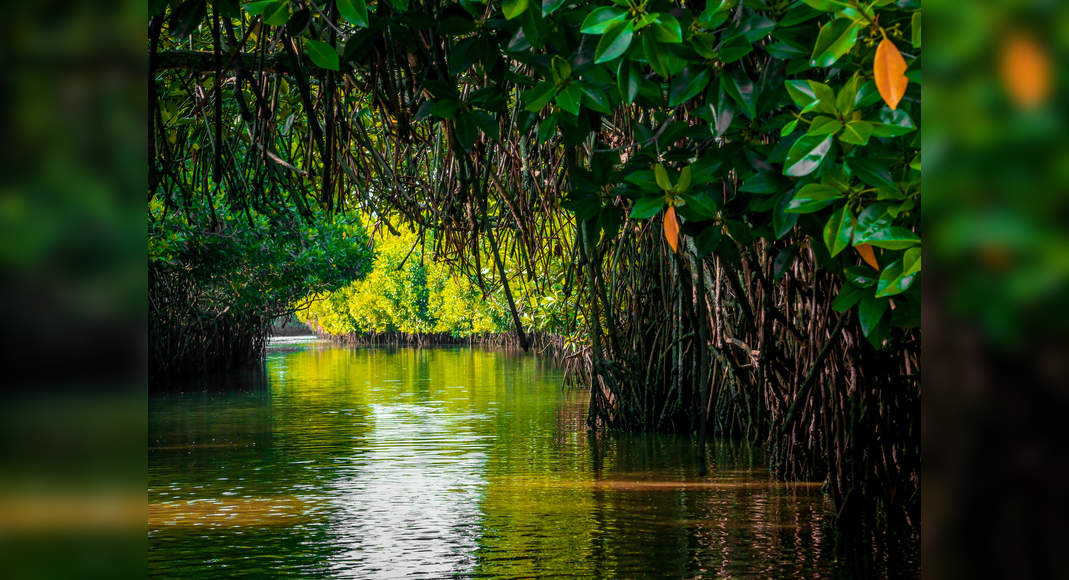India has designated five new Ramsar sites under the Ramsar Convention. The new Ramsar sites include three wetlands in Tamil Nadu, one in Mizoram and one in Madhya Pradesh. This brings the total number of Ramsar Sites in India to 54. Earlier, the number of Ramsar sites in India stood at 49.
Here are the 5 new Ramsar Sites in India
1. Pichavaram Mangrove, Tamil Nadu

This site consists of India’s largest mangrove ecosystems, is located between the prominent estuaries of the Vellar and Coleroon Rivers and includes littoral and swamp forest habitats. It not only offers waterscape and backwater cruises but also another rare sight – the mangrove trees are permanently rooted in a few feet of water.
Like other mangrove wetlands in India, Pichavaram Mangrove supports several threatened species such as the critically endangered great white-bellied heron (Ardea insignis) and spoon-billed sandpiper (Eurynorhynchus pygmeus), the endangered spotted greenshank (Tringa guttifer) and the vulnerable olive ridley turtle (Lepidochelys olivacea).
2. Sakhya Sagar, Madhya Pradesh

Sakhya Sagar is a man-made reservoir in the Madhav National Park on the outskirts of Shivpuri, Madhya Pradesh. The Site has a diverse landscape that includes open water and surrounding marshes, plantations, and a small patch of agricultural land.
The wetland supports 19 fish species, nine reptiles, and 19 mammals, and it serves as an important staging ground for 73 bird species. The wetland is also important for nutrient cycling, groundwater recharge, and regulating the local microclimate.
3. Pala Wetland, Mizoram

Pala Wetland is Mizoram’s largest natural wetland. The Site includes a relatively deep lake (over 16 metres deep on average) and its surrounding forest catchment area, which rises to nearly 600 metres above sea level. The wetland is home to a diverse range of animal species, including at least seven mammals, 222 birds, 11 amphibians, and 21 reptiles.
Pala Wetland is revered by the local Mara people and has a deep connection to their history. The wetland is a major source of freshwater and fish for the villages on its outskirts, as well as a major source of irrigation water for wet rice cultivation, horticulture, and other forms of agriculture.
4. PalliKaranai Marsh, Tamil Nadu

This freshwater marsh and partly saline wetland, located about 20 kilometres south of Chennai, serves as an aquatic buffer for the flood-prone districts of Chennai and Chengalpattu. The marshland’s diverse ecosystem is home to 115 bird species, ten mammals, 21 reptiles, ten amphibians, 46 fish, nine mollusks, five crustaceans, and seven butterfly species.
Aside from its biodiversity value, the wetland plays an important role in flood prevention for the city of Chennai, absorbing water during wet periods and releasing it during dry spells.
5. Karikili Bird Sanctuary, Tamil Nadu

The Karikili Bird Sanctuary is made up of two rain-fed non-perennial irrigation tanks that span over 58 hectares. The area is flat or gently undulating, with low ridged, rocky hillocks nearby. Rainfall varies greatly from year to year, ranging from 400 mm to nearly 1,700 mm, flooding the Site from July to September.
The Site is home to a variety of resident and migratory birds, the majority of which are waterbirds, as well as a few scavenger species. The Karikili Bird Sanctuary has a long history of people working together to protect waterbirds because their guano provides nutrient-rich water to crop fields.